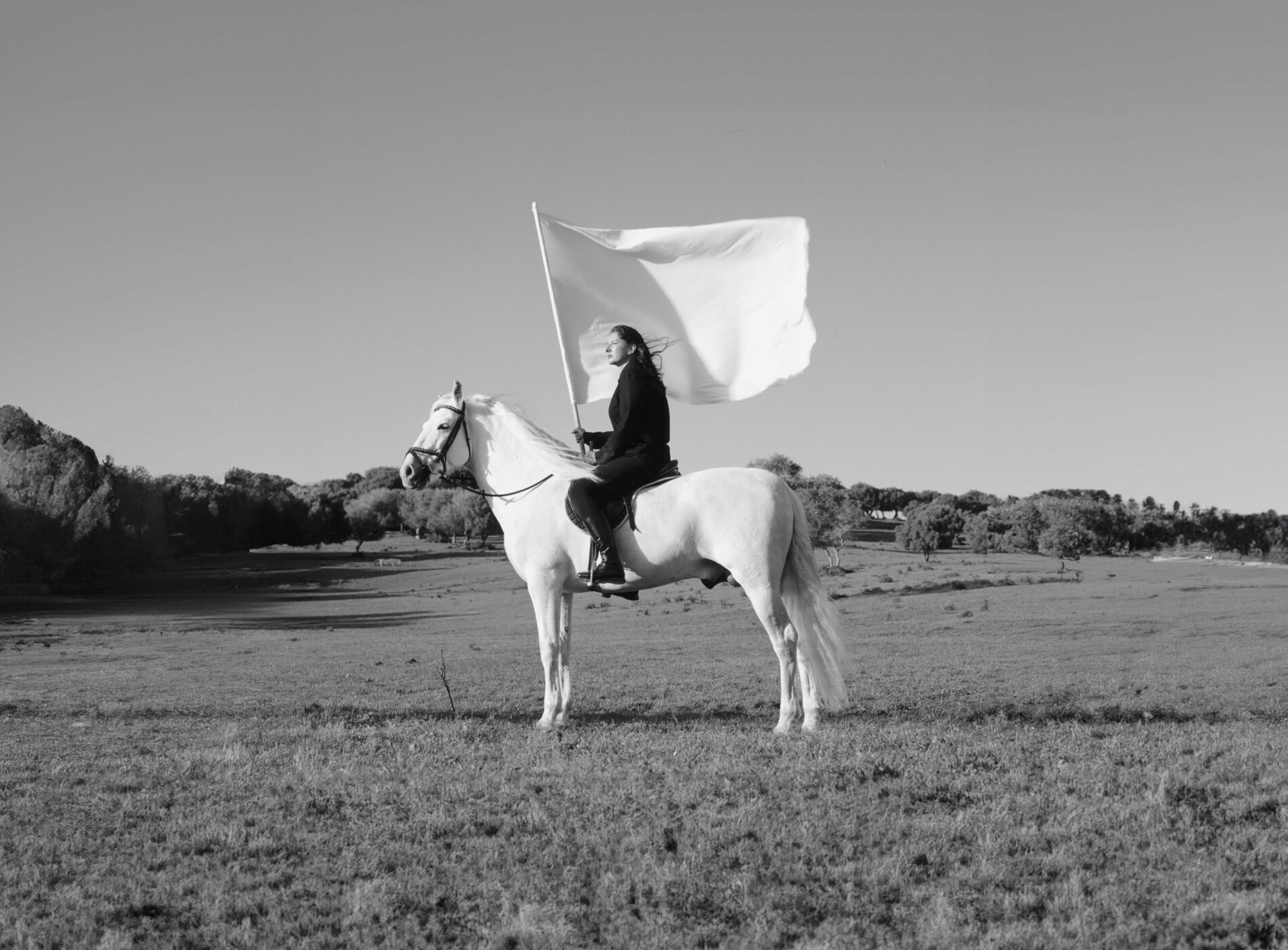

Francesco Clemente. “Yes” (2021). Watercolor on paper. 12” x 9”. © Francesco Clemente; Courtesy the artist and Vito Schnabel Gallery.
Roses, hearts, bright flowers, animal spirits, clouds, centuries-old poetry, ethereal glimmering figures, tantric patterns, a bit of ancient history, and one heart-stopping self-portrait. Crimson, indigo, saffron, olive, earth, and eccentric mauve. These are the foundational elements in the affecting scenes of symbol, metaphor, and mystery that painter Francesco Clemente has manifested for decades.
Clemente’s first Los Angeles solo exhibition in nearly two decades has just opened in a Vito Schnabel Gallery pop-up in the vast Art Deco hall of the Old Santa Monica Post Office. _Twenty Years of Painting: 2001-2021_ happens to cover exactly those decades, with several significant series and some dynamic recent work represented across 30 canvases. Curated to highlight particularly resonant themes of love, loss, ritual, and spirituality, the installation feels deeply tethered to the present moment. It is a time of massive global cultural shifts, uncertainty, and danger, as well as evident returns to nature and the self-care of the soul, deconstructed power structures, gender rebalancing, and decolonization of history. It’s a lot. To paraphrase Walt Whitman, it contradicts itself and contains multitudes. But for the New York-based, Italian-born artist who began traveling to India in the 1970s, landed in New York in 1982, and has since split his time between all these places, as well as New Mexico, the paradox is the point.
Clemente is a sensitive figurative painter among macho conceptualists and minimalists; an eager student of the physical, sensual aura of paint in a world of increasingly digital and virtual experience; a man embracing a narrative, symbol-rich, and multifaceted spiritual perspective inside an increasingly cynical and capital-driven art world and cultural milieu; and a human just trying to survive and make it all worthwhile—his lifelong meditation on the human condition has yielded some of the most indelible paintings of our time and inspired generations of creators and audiences to look deeper. _Flaunt_ caught up with the man in Los Angeles, as he arrived to launch his landmark exhibition.


Francesco Clemente. “La femme fontaine” (2012). Pigment on linen. 96” x 144”. © Francesco Clemente; Courtesy the artist and Vito Schnabel Gallery.


Francesco Clemente. “White Flags I” (2015). Mixed media on canvas. 78” x 93”. © Francesco Clemente; Courtesy the artist and Vito Schnabel Gallery.
**Why do this show now? It has been almost the whole 20 years that the show covers since your last solo project here. I know you like to install your work in eccentric locations...**
Yes, I do! I like the idea that everything is impermanent, including institutions. So I think it’s a bit symbolic; to be in a post office today is fantastic, like an archeological site. \[Laughs\] And the location for me is all about the light, too. If you visit my studio, you see I work in only natural light and not necessarily a bright light—it’s the same way I look at them. I’ve been fighting all my life against the spotlight, objectifying the painting, making it into an object. It flattens the light of the painting. The light should come from within the painting. It shouldn’t be aimed at it!
**I was excited too about the soft lighting there. You really felt it when the fog rolled in.**
Yes. Before everyone got there the fog came in from the ocean, and it made it even more of a moment—because the goal is really for someone to be there and remember the moment.
**And speaking of being in the moment, we were conversing about the word ‘spiritual,’ and you mentioned how in a sense that word has lost its meaning these days—but obviously not for you. How have you dealt with that? Your art and your spiritual practice—how does it all fit together?**
Basically, to me, ‘spiritual’ means to have a view that says... well, it’s actually a sentence from a Basquiat drawing. It says, ‘Nothing to be gained here.’ That is spiritual. That is a step back. You know in the Kubrick movie _The Shining_ when the child is being chased by the murderer and he is running in the maze, and then he makes a step back in his own footprints and jumps to the side? That is an image of spirituality— to exit.
**I’m sorry I need a moment. I’m feeling some kind of emotions now.**
I’m getting weepy too. \[Laughs\]. But it is true. That is spirituality—to take a step back and jump to the side, basically to refuse to accept this life of reaction where everything you do is a reaction to something. Just stop reacting... Well, now you found out that I’m a weeper. I usually cry in the second half of the day, closer to 6 pm; I’m not a morning cryer.
**It’s 11 am right now. But in seriousness, I think that says something about what was happening with art in New York when you got there in 1982 after a decade of travel to India. New York at that time was a very masculine, competitive, minimalist, and conceptualist environment. And what you had to offer was almost the complete opposite of that, energetically and aesthetically. And I’m curious, did you anticipate that what you were going to do would be so different, or did it just play out that way?**
Well, the context I came from was _arte povera_, which was very much a language based on reaction to the minimalist movement. And every work by an _arte povera_ artist was an answer or a riff or a joke or a variation on something that came from New York. So I grew up spending time with those artists, educated by them, but I knew I could not be one of them. The other thing is that I was also living in India. So my entire reference was not so much art history as the history of contemplative traditions. They reveal a symbolic language connected to the history of tantra, where there is basically the idea that the male universe is dead without the female energy. There’s a famous saying, ‘Shiva without Shakti is a corpse.’ So I came from that, and I came into the picture without really any expectation whatsoever, except my curiosity.


Francesco Clemente. “Toni Morrison” (1998). Oil on canvas. 46” x 92”. © Francesco Clemente; Courtesy the artist and Vito Schnabel Gallery.
**In non-Western traditions, a lot of the visual culture is devotional. Your _Garland of Letters_ works look like prayers and mandalas to me, and the dated works of May 2020 marking dark times in the early pandemic have a _memento mori_ quality. So when you talk about being in that tradition is that what you mean?**
Well, yes, I know what you’re saying. On the other hand, when you look at the real thing, it is not like that. I mean, look, I went to see a William Blake exhibition in London, and there was a sign at the door saying, ‘We warn the audience that the subject matter of this exhibition can be very upsetting.’ And so we know that William Blake knew what spirituality was, and we know that he never left behind a single drawing that was all pink and blue and showed how happy the world is. That’s not spirituality. I had this discussion recently with someone who wanted to commission from me a mural for a shop. And I made a drawing based on Walter Benjamin and \[the Paul Klee painting\] “Angelus Novus_”_, where the world is described as a pile of ruins climbing to the sky and an angel receding into the sky, looking down at this mountain of ruins with his mouth open. This is the most secular and religious and spiritual image. And I have always been obsessed with that image, like a lot of other people. And the person commissioning the work said ‘I don’t know, but we’re Buddhist. We want to see Nirvana. There is too much Samsara.’ And I thought, even from the Buddhist point of view, the whole point of Buddhism is Samsara in Nirvana.
Spirituality is you having the espresso in the morning, that’s spirituality—it is not something elsewhere or otherworldly. It is the world. There is a painting in the show which is called _Wedding_; it is a wedding of a sunflower with a grapevine. And that to me is an image of abundance and prosperity and wine and the generosity of the earth and the generosity of feeding people, et cetera.
**My understanding of Buddhist detachment is not about not caring. It’s about noticing rather than engaging. Is that right?**
The word ‘noticing’ is appropriate. I tend to use the word witnessing. All of these traditions, they claim that you can actually come to rest in a place of witnessing where you are active in the world, but the world is not active within you. \[Pause\] You are active in the world, but the world does not win you over. You remain the witness of yourself.
Everything I make is like a crossroads. I’m a believer in synchronicity. There’s a worldview where everything is cause and effect—it is a closed universe. Science thinks that way, the Buddhist tradition thinks that way. Then there are other traditions. What I’m saying is there is a way to look at the world as a song rather than as a machine. A mechanical toy—I wouldn’t even give it the dignity of a machine, a mechanical toy. I prefer to look at the world as a score of music—a musical score—than as a mechanical toy. And that means that you live accordingly. Which means you pay attention to the symbolic language of the world. You never look at something as if it is not talking to you. Everything you look at is looking at you back.
Fundamentally, what one does, I think is, to witness, to describe a view where you still have a sense of the sacred, where you still look at the world with a sense of the sacred. I guess I’ve said this before, but I never really explained what the sense of the sacred is. But I think a sense of the sacred—like what I was telling you about earlier, that it’s not just us looking at the world, it is the world is looking back at us—is that we have a responsibility about the way we appear to the world, you know? So it’s not some kind of big idea of spirituality where you just take refuge in this sweet world where everyone is nice. No. Spirituality is war! \[Laughs\]


Francesco Clemente. “Victory” (2021). Watercolor on paper. 60” x 80”. 60 ⅝” x 80 ½” x 2 ⅞”, framed. © Francesco Clemente; Courtesy the artist and Vito Schnabel Gallery.
**So you had to go through 20 years’ worth of work and archives to get to this exhibition. Were you surprised looking back at all that you had done? Does it mean something completely different to you now than when you made it? And the world around us has changed so much, too.**
First, I liked the idea of taking one or two out of each group. I wanted to pick as few works as possible, and as it’s covering 20 years, there are about 30 works. But the most interesting arc for me in the last 20 years is how the impulse to make something has become more concise, more powerful, and I’m less and less aware of the reasons. I’m really inhabited by this thing that wants to say these things, you know. Originally, I would need to hear something and then read something, and then someone would tell me something, and all of these things would make a family of statements that came together into the necessity to make a particular group of works. As the years have gone by, I’m less and less aware of what starts anything. I just have to make certain works. And sometimes the reason is very clear, but some other times, it’s not.
Afterwards is another story because once the work is actually there, then I start to, in a way, research it, to find out what it is, what it is related to. For example, for the glass paintings, I had no idea that so many modernist artists worked on glass; glass painting was also what I’d seen in India. I had no idea that there were a number of works in our art universe. And then some works have a very powerful and simple reason. For example, the painting with the quote from _The Iliad_. I was feeling exasperation about how all the craziness that has been unleashed by the pandemic. And I just thought, ‘I really need to look back and find the origin of the error.’ When did this psychotic behavior start? And then I thought, well, _The Iliad_ seems a very good place to go for the beginning of human psychosis \[laughs\].
But then the beauty of painting, and the beauty of looking at art, is that you always end up seeing something you didn’t expect to see. For example, I went back to _The Iliad,_ and there
are hundreds of pages of murders and blood and insanity. And then there are these marvelous windows where it’s just descriptions of nature—the olive tree, the grape, the waves of the sea, and in the context of a murderous humanity, it stands out. And at the end, the whole group of work was just quotes from the nature passages—not the war passages at all.
In a way, something those early days at the Theosophical Society taught me was to accept the simple consideration that all of these traditions, all of the religions—basically all of the human endeavor—is based on a common experience. And there’s a very simple, basic experience of, you know, _wonder_—that you look at the world, and you’re surprised, and your mind comes to silence and you sit in silence and there’s really not much to do. I mean, it’s a small thing, the human experience; it is so, so tiny. \[Laughs\] It’s just exasperating, isn’t it?
**It’s all a lie, and nothing we do matters?**
No! It’s the opposite—it’s all so important, everything we do matters. Absolutely everything.


Francesco Clemente. “The Garland of Letters VII” (2018). Paint on glass. 24” x 24”. 25 ½” x 25 ½”, framed. © Francesco Clemente; Courtesy the artist and Vito Schnabel Gallery.
Written by [Shana Nys Dambrot](https://instagram.com/shananys)
 
Francesco Clemente. “Yes” (2021). Watercolor on paper. 12” x 9”. © Francesco Clemente; Courtesy the artist and Vito Schnabel Gallery.
Roses, hearts, bright flowers, animal spirits, clouds, centuries-old poetry, ethereal glimmering figures, tantric patterns, a bit of ancient history, and one heart-stopping self-portrait. Crimson, indigo, saffron, olive, earth, and eccentric mauve. These are the foundational elements in the affecting scenes of symbol, metaphor, and mystery that painter Francesco Clemente has manifested for decades.
Clemente’s first Los Angeles solo exhibition in nearly two decades has just opened in a Vito Schnabel Gallery pop-up in the vast Art Deco hall of the Old Santa Monica Post Office. _Twenty Years of Painting: 2001-2021_ happens to cover exactly those decades, with several significant series and some dynamic recent work represented across 30 canvases. Curated to highlight particularly resonant themes of love, loss, ritual, and spirituality, the installation feels deeply tethered to the present moment. It is a time of massive global cultural shifts, uncertainty, and danger, as well as evident returns to nature and the self-care of the soul, deconstructed power structures, gender rebalancing, and decolonization of history. It’s a lot. To paraphrase Walt Whitman, it contradicts itself and contains multitudes. But for the New York-based, Italian-born artist who began traveling to India in the 1970s, landed in New York in 1982, and has since split his time between all these places, as well as New Mexico, the paradox is the point.
Clemente is a sensitive figurative painter among macho conceptualists and minimalists; an eager student of the physical, sensual aura of paint in a world of increasingly digital and virtual experience; a man embracing a narrative, symbol-rich, and multifaceted spiritual perspective inside an increasingly cynical and capital-driven art world and cultural milieu; and a human just trying to survive and make it all worthwhile—his lifelong meditation on the human condition has yielded some of the most indelible paintings of our time and inspired generations of creators and audiences to look deeper. _Flaunt_ caught up with the man in Los Angeles, as he arrived to launch his landmark exhibition.

Francesco Clemente. “Yes” (2021). Watercolor on paper. 12” x 9”. © Francesco Clemente; Courtesy the artist and Vito Schnabel Gallery.
Roses, hearts, bright flowers, animal spirits, clouds, centuries-old poetry, ethereal glimmering figures, tantric patterns, a bit of ancient history, and one heart-stopping self-portrait. Crimson, indigo, saffron, olive, earth, and eccentric mauve. These are the foundational elements in the affecting scenes of symbol, metaphor, and mystery that painter Francesco Clemente has manifested for decades.
Clemente’s first Los Angeles solo exhibition in nearly two decades has just opened in a Vito Schnabel Gallery pop-up in the vast Art Deco hall of the Old Santa Monica Post Office. _Twenty Years of Painting: 2001-2021_ happens to cover exactly those decades, with several significant series and some dynamic recent work represented across 30 canvases. Curated to highlight particularly resonant themes of love, loss, ritual, and spirituality, the installation feels deeply tethered to the present moment. It is a time of massive global cultural shifts, uncertainty, and danger, as well as evident returns to nature and the self-care of the soul, deconstructed power structures, gender rebalancing, and decolonization of history. It’s a lot. To paraphrase Walt Whitman, it contradicts itself and contains multitudes. But for the New York-based, Italian-born artist who began traveling to India in the 1970s, landed in New York in 1982, and has since split his time between all these places, as well as New Mexico, the paradox is the point.
Clemente is a sensitive figurative painter among macho conceptualists and minimalists; an eager student of the physical, sensual aura of paint in a world of increasingly digital and virtual experience; a man embracing a narrative, symbol-rich, and multifaceted spiritual perspective inside an increasingly cynical and capital-driven art world and cultural milieu; and a human just trying to survive and make it all worthwhile—his lifelong meditation on the human condition has yielded some of the most indelible paintings of our time and inspired generations of creators and audiences to look deeper. _Flaunt_ caught up with the man in Los Angeles, as he arrived to launch his landmark exhibition.
 
Francesco Clemente. “La femme fontaine” (2012). Pigment on linen. 96” x 144”. © Francesco Clemente; Courtesy the artist and Vito Schnabel Gallery.

Francesco Clemente. “La femme fontaine” (2012). Pigment on linen. 96” x 144”. © Francesco Clemente; Courtesy the artist and Vito Schnabel Gallery.
 
Francesco Clemente. “White Flags I” (2015). Mixed media on canvas. 78” x 93”. © Francesco Clemente; Courtesy the artist and Vito Schnabel Gallery.
**Why do this show now? It has been almost the whole 20 years that the show covers since your last solo project here. I know you like to install your work in eccentric locations...**
Yes, I do! I like the idea that everything is impermanent, including institutions. So I think it’s a bit symbolic; to be in a post office today is fantastic, like an archeological site. \[Laughs\] And the location for me is all about the light, too. If you visit my studio, you see I work in only natural light and not necessarily a bright light—it’s the same way I look at them. I’ve been fighting all my life against the spotlight, objectifying the painting, making it into an object. It flattens the light of the painting. The light should come from within the painting. It shouldn’t be aimed at it!
**I was excited too about the soft lighting there. You really felt it when the fog rolled in.**
Yes. Before everyone got there the fog came in from the ocean, and it made it even more of a moment—because the goal is really for someone to be there and remember the moment.
**And speaking of being in the moment, we were conversing about the word ‘spiritual,’ and you mentioned how in a sense that word has lost its meaning these days—but obviously not for you. How have you dealt with that? Your art and your spiritual practice—how does it all fit together?**
Basically, to me, ‘spiritual’ means to have a view that says... well, it’s actually a sentence from a Basquiat drawing. It says, ‘Nothing to be gained here.’ That is spiritual. That is a step back. You know in the Kubrick movie _The Shining_ when the child is being chased by the murderer and he is running in the maze, and then he makes a step back in his own footprints and jumps to the side? That is an image of spirituality— to exit.
**I’m sorry I need a moment. I’m feeling some kind of emotions now.**
I’m getting weepy too. \[Laughs\]. But it is true. That is spirituality—to take a step back and jump to the side, basically to refuse to accept this life of reaction where everything you do is a reaction to something. Just stop reacting... Well, now you found out that I’m a weeper. I usually cry in the second half of the day, closer to 6 pm; I’m not a morning cryer.
**It’s 11 am right now. But in seriousness, I think that says something about what was happening with art in New York when you got there in 1982 after a decade of travel to India. New York at that time was a very masculine, competitive, minimalist, and conceptualist environment. And what you had to offer was almost the complete opposite of that, energetically and aesthetically. And I’m curious, did you anticipate that what you were going to do would be so different, or did it just play out that way?**
Well, the context I came from was _arte povera_, which was very much a language based on reaction to the minimalist movement. And every work by an _arte povera_ artist was an answer or a riff or a joke or a variation on something that came from New York. So I grew up spending time with those artists, educated by them, but I knew I could not be one of them. The other thing is that I was also living in India. So my entire reference was not so much art history as the history of contemplative traditions. They reveal a symbolic language connected to the history of tantra, where there is basically the idea that the male universe is dead without the female energy. There’s a famous saying, ‘Shiva without Shakti is a corpse.’ So I came from that, and I came into the picture without really any expectation whatsoever, except my curiosity.

Francesco Clemente. “White Flags I” (2015). Mixed media on canvas. 78” x 93”. © Francesco Clemente; Courtesy the artist and Vito Schnabel Gallery.
**Why do this show now? It has been almost the whole 20 years that the show covers since your last solo project here. I know you like to install your work in eccentric locations...**
Yes, I do! I like the idea that everything is impermanent, including institutions. So I think it’s a bit symbolic; to be in a post office today is fantastic, like an archeological site. \[Laughs\] And the location for me is all about the light, too. If you visit my studio, you see I work in only natural light and not necessarily a bright light—it’s the same way I look at them. I’ve been fighting all my life against the spotlight, objectifying the painting, making it into an object. It flattens the light of the painting. The light should come from within the painting. It shouldn’t be aimed at it!
**I was excited too about the soft lighting there. You really felt it when the fog rolled in.**
Yes. Before everyone got there the fog came in from the ocean, and it made it even more of a moment—because the goal is really for someone to be there and remember the moment.
**And speaking of being in the moment, we were conversing about the word ‘spiritual,’ and you mentioned how in a sense that word has lost its meaning these days—but obviously not for you. How have you dealt with that? Your art and your spiritual practice—how does it all fit together?**
Basically, to me, ‘spiritual’ means to have a view that says... well, it’s actually a sentence from a Basquiat drawing. It says, ‘Nothing to be gained here.’ That is spiritual. That is a step back. You know in the Kubrick movie _The Shining_ when the child is being chased by the murderer and he is running in the maze, and then he makes a step back in his own footprints and jumps to the side? That is an image of spirituality— to exit.
**I’m sorry I need a moment. I’m feeling some kind of emotions now.**
I’m getting weepy too. \[Laughs\]. But it is true. That is spirituality—to take a step back and jump to the side, basically to refuse to accept this life of reaction where everything you do is a reaction to something. Just stop reacting... Well, now you found out that I’m a weeper. I usually cry in the second half of the day, closer to 6 pm; I’m not a morning cryer.
**It’s 11 am right now. But in seriousness, I think that says something about what was happening with art in New York when you got there in 1982 after a decade of travel to India. New York at that time was a very masculine, competitive, minimalist, and conceptualist environment. And what you had to offer was almost the complete opposite of that, energetically and aesthetically. And I’m curious, did you anticipate that what you were going to do would be so different, or did it just play out that way?**
Well, the context I came from was _arte povera_, which was very much a language based on reaction to the minimalist movement. And every work by an _arte povera_ artist was an answer or a riff or a joke or a variation on something that came from New York. So I grew up spending time with those artists, educated by them, but I knew I could not be one of them. The other thing is that I was also living in India. So my entire reference was not so much art history as the history of contemplative traditions. They reveal a symbolic language connected to the history of tantra, where there is basically the idea that the male universe is dead without the female energy. There’s a famous saying, ‘Shiva without Shakti is a corpse.’ So I came from that, and I came into the picture without really any expectation whatsoever, except my curiosity.
 
Francesco Clemente. “Toni Morrison” (1998). Oil on canvas. 46” x 92”. © Francesco Clemente; Courtesy the artist and Vito Schnabel Gallery.
**In non-Western traditions, a lot of the visual culture is devotional. Your _Garland of Letters_ works look like prayers and mandalas to me, and the dated works of May 2020 marking dark times in the early pandemic have a _memento mori_ quality. So when you talk about being in that tradition is that what you mean?**
Well, yes, I know what you’re saying. On the other hand, when you look at the real thing, it is not like that. I mean, look, I went to see a William Blake exhibition in London, and there was a sign at the door saying, ‘We warn the audience that the subject matter of this exhibition can be very upsetting.’ And so we know that William Blake knew what spirituality was, and we know that he never left behind a single drawing that was all pink and blue and showed how happy the world is. That’s not spirituality. I had this discussion recently with someone who wanted to commission from me a mural for a shop. And I made a drawing based on Walter Benjamin and \[the Paul Klee painting\] “Angelus Novus_”_, where the world is described as a pile of ruins climbing to the sky and an angel receding into the sky, looking down at this mountain of ruins with his mouth open. This is the most secular and religious and spiritual image. And I have always been obsessed with that image, like a lot of other people. And the person commissioning the work said ‘I don’t know, but we’re Buddhist. We want to see Nirvana. There is too much Samsara.’ And I thought, even from the Buddhist point of view, the whole point of Buddhism is Samsara in Nirvana.
Spirituality is you having the espresso in the morning, that’s spirituality—it is not something elsewhere or otherworldly. It is the world. There is a painting in the show which is called _Wedding_; it is a wedding of a sunflower with a grapevine. And that to me is an image of abundance and prosperity and wine and the generosity of the earth and the generosity of feeding people, et cetera.
**My understanding of Buddhist detachment is not about not caring. It’s about noticing rather than engaging. Is that right?**
The word ‘noticing’ is appropriate. I tend to use the word witnessing. All of these traditions, they claim that you can actually come to rest in a place of witnessing where you are active in the world, but the world is not active within you. \[Pause\] You are active in the world, but the world does not win you over. You remain the witness of yourself.
Everything I make is like a crossroads. I’m a believer in synchronicity. There’s a worldview where everything is cause and effect—it is a closed universe. Science thinks that way, the Buddhist tradition thinks that way. Then there are other traditions. What I’m saying is there is a way to look at the world as a song rather than as a machine. A mechanical toy—I wouldn’t even give it the dignity of a machine, a mechanical toy. I prefer to look at the world as a score of music—a musical score—than as a mechanical toy. And that means that you live accordingly. Which means you pay attention to the symbolic language of the world. You never look at something as if it is not talking to you. Everything you look at is looking at you back.
Fundamentally, what one does, I think is, to witness, to describe a view where you still have a sense of the sacred, where you still look at the world with a sense of the sacred. I guess I’ve said this before, but I never really explained what the sense of the sacred is. But I think a sense of the sacred—like what I was telling you about earlier, that it’s not just us looking at the world, it is the world is looking back at us—is that we have a responsibility about the way we appear to the world, you know? So it’s not some kind of big idea of spirituality where you just take refuge in this sweet world where everyone is nice. No. Spirituality is war! \[Laughs\]

Francesco Clemente. “Toni Morrison” (1998). Oil on canvas. 46” x 92”. © Francesco Clemente; Courtesy the artist and Vito Schnabel Gallery.
**In non-Western traditions, a lot of the visual culture is devotional. Your _Garland of Letters_ works look like prayers and mandalas to me, and the dated works of May 2020 marking dark times in the early pandemic have a _memento mori_ quality. So when you talk about being in that tradition is that what you mean?**
Well, yes, I know what you’re saying. On the other hand, when you look at the real thing, it is not like that. I mean, look, I went to see a William Blake exhibition in London, and there was a sign at the door saying, ‘We warn the audience that the subject matter of this exhibition can be very upsetting.’ And so we know that William Blake knew what spirituality was, and we know that he never left behind a single drawing that was all pink and blue and showed how happy the world is. That’s not spirituality. I had this discussion recently with someone who wanted to commission from me a mural for a shop. And I made a drawing based on Walter Benjamin and \[the Paul Klee painting\] “Angelus Novus_”_, where the world is described as a pile of ruins climbing to the sky and an angel receding into the sky, looking down at this mountain of ruins with his mouth open. This is the most secular and religious and spiritual image. And I have always been obsessed with that image, like a lot of other people. And the person commissioning the work said ‘I don’t know, but we’re Buddhist. We want to see Nirvana. There is too much Samsara.’ And I thought, even from the Buddhist point of view, the whole point of Buddhism is Samsara in Nirvana.
Spirituality is you having the espresso in the morning, that’s spirituality—it is not something elsewhere or otherworldly. It is the world. There is a painting in the show which is called _Wedding_; it is a wedding of a sunflower with a grapevine. And that to me is an image of abundance and prosperity and wine and the generosity of the earth and the generosity of feeding people, et cetera.
**My understanding of Buddhist detachment is not about not caring. It’s about noticing rather than engaging. Is that right?**
The word ‘noticing’ is appropriate. I tend to use the word witnessing. All of these traditions, they claim that you can actually come to rest in a place of witnessing where you are active in the world, but the world is not active within you. \[Pause\] You are active in the world, but the world does not win you over. You remain the witness of yourself.
Everything I make is like a crossroads. I’m a believer in synchronicity. There’s a worldview where everything is cause and effect—it is a closed universe. Science thinks that way, the Buddhist tradition thinks that way. Then there are other traditions. What I’m saying is there is a way to look at the world as a song rather than as a machine. A mechanical toy—I wouldn’t even give it the dignity of a machine, a mechanical toy. I prefer to look at the world as a score of music—a musical score—than as a mechanical toy. And that means that you live accordingly. Which means you pay attention to the symbolic language of the world. You never look at something as if it is not talking to you. Everything you look at is looking at you back.
Fundamentally, what one does, I think is, to witness, to describe a view where you still have a sense of the sacred, where you still look at the world with a sense of the sacred. I guess I’ve said this before, but I never really explained what the sense of the sacred is. But I think a sense of the sacred—like what I was telling you about earlier, that it’s not just us looking at the world, it is the world is looking back at us—is that we have a responsibility about the way we appear to the world, you know? So it’s not some kind of big idea of spirituality where you just take refuge in this sweet world where everyone is nice. No. Spirituality is war! \[Laughs\]
 
Francesco Clemente. “Victory” (2021). Watercolor on paper. 60” x 80”. 60 ⅝” x 80 ½” x 2 ⅞”, framed. © Francesco Clemente; Courtesy the artist and Vito Schnabel Gallery.
**So you had to go through 20 years’ worth of work and archives to get to this exhibition. Were you surprised looking back at all that you had done? Does it mean something completely different to you now than when you made it? And the world around us has changed so much, too.**
First, I liked the idea of taking one or two out of each group. I wanted to pick as few works as possible, and as it’s covering 20 years, there are about 30 works. But the most interesting arc for me in the last 20 years is how the impulse to make something has become more concise, more powerful, and I’m less and less aware of the reasons. I’m really inhabited by this thing that wants to say these things, you know. Originally, I would need to hear something and then read something, and then someone would tell me something, and all of these things would make a family of statements that came together into the necessity to make a particular group of works. As the years have gone by, I’m less and less aware of what starts anything. I just have to make certain works. And sometimes the reason is very clear, but some other times, it’s not.
Afterwards is another story because once the work is actually there, then I start to, in a way, research it, to find out what it is, what it is related to. For example, for the glass paintings, I had no idea that so many modernist artists worked on glass; glass painting was also what I’d seen in India. I had no idea that there were a number of works in our art universe. And then some works have a very powerful and simple reason. For example, the painting with the quote from _The Iliad_. I was feeling exasperation about how all the craziness that has been unleashed by the pandemic. And I just thought, ‘I really need to look back and find the origin of the error.’ When did this psychotic behavior start? And then I thought, well, _The Iliad_ seems a very good place to go for the beginning of human psychosis \[laughs\].
But then the beauty of painting, and the beauty of looking at art, is that you always end up seeing something you didn’t expect to see. For example, I went back to _The Iliad,_ and there
are hundreds of pages of murders and blood and insanity. And then there are these marvelous windows where it’s just descriptions of nature—the olive tree, the grape, the waves of the sea, and in the context of a murderous humanity, it stands out. And at the end, the whole group of work was just quotes from the nature passages—not the war passages at all.
In a way, something those early days at the Theosophical Society taught me was to accept the simple consideration that all of these traditions, all of the religions—basically all of the human endeavor—is based on a common experience. And there’s a very simple, basic experience of, you know, _wonder_—that you look at the world, and you’re surprised, and your mind comes to silence and you sit in silence and there’s really not much to do. I mean, it’s a small thing, the human experience; it is so, so tiny. \[Laughs\] It’s just exasperating, isn’t it?
**It’s all a lie, and nothing we do matters?**
No! It’s the opposite—it’s all so important, everything we do matters. Absolutely everything.

Francesco Clemente. “Victory” (2021). Watercolor on paper. 60” x 80”. 60 ⅝” x 80 ½” x 2 ⅞”, framed. © Francesco Clemente; Courtesy the artist and Vito Schnabel Gallery.
**So you had to go through 20 years’ worth of work and archives to get to this exhibition. Were you surprised looking back at all that you had done? Does it mean something completely different to you now than when you made it? And the world around us has changed so much, too.**
First, I liked the idea of taking one or two out of each group. I wanted to pick as few works as possible, and as it’s covering 20 years, there are about 30 works. But the most interesting arc for me in the last 20 years is how the impulse to make something has become more concise, more powerful, and I’m less and less aware of the reasons. I’m really inhabited by this thing that wants to say these things, you know. Originally, I would need to hear something and then read something, and then someone would tell me something, and all of these things would make a family of statements that came together into the necessity to make a particular group of works. As the years have gone by, I’m less and less aware of what starts anything. I just have to make certain works. And sometimes the reason is very clear, but some other times, it’s not.
Afterwards is another story because once the work is actually there, then I start to, in a way, research it, to find out what it is, what it is related to. For example, for the glass paintings, I had no idea that so many modernist artists worked on glass; glass painting was also what I’d seen in India. I had no idea that there were a number of works in our art universe. And then some works have a very powerful and simple reason. For example, the painting with the quote from _The Iliad_. I was feeling exasperation about how all the craziness that has been unleashed by the pandemic. And I just thought, ‘I really need to look back and find the origin of the error.’ When did this psychotic behavior start? And then I thought, well, _The Iliad_ seems a very good place to go for the beginning of human psychosis \[laughs\].
But then the beauty of painting, and the beauty of looking at art, is that you always end up seeing something you didn’t expect to see. For example, I went back to _The Iliad,_ and there
are hundreds of pages of murders and blood and insanity. And then there are these marvelous windows where it’s just descriptions of nature—the olive tree, the grape, the waves of the sea, and in the context of a murderous humanity, it stands out. And at the end, the whole group of work was just quotes from the nature passages—not the war passages at all.
In a way, something those early days at the Theosophical Society taught me was to accept the simple consideration that all of these traditions, all of the religions—basically all of the human endeavor—is based on a common experience. And there’s a very simple, basic experience of, you know, _wonder_—that you look at the world, and you’re surprised, and your mind comes to silence and you sit in silence and there’s really not much to do. I mean, it’s a small thing, the human experience; it is so, so tiny. \[Laughs\] It’s just exasperating, isn’t it?
**It’s all a lie, and nothing we do matters?**
No! It’s the opposite—it’s all so important, everything we do matters. Absolutely everything.
 
Francesco Clemente. “The Garland of Letters VII” (2018). Paint on glass. 24” x 24”. 25 ½” x 25 ½”, framed. © Francesco Clemente; Courtesy the artist and Vito Schnabel Gallery.
Written by [Shana Nys Dambrot](https://instagram.com/shananys)

Francesco Clemente. “The Garland of Letters VII” (2018). Paint on glass. 24” x 24”. 25 ½” x 25 ½”, framed. © Francesco Clemente; Courtesy the artist and Vito Schnabel Gallery.
Written by [Shana Nys Dambrot](https://instagram.com/shananys)

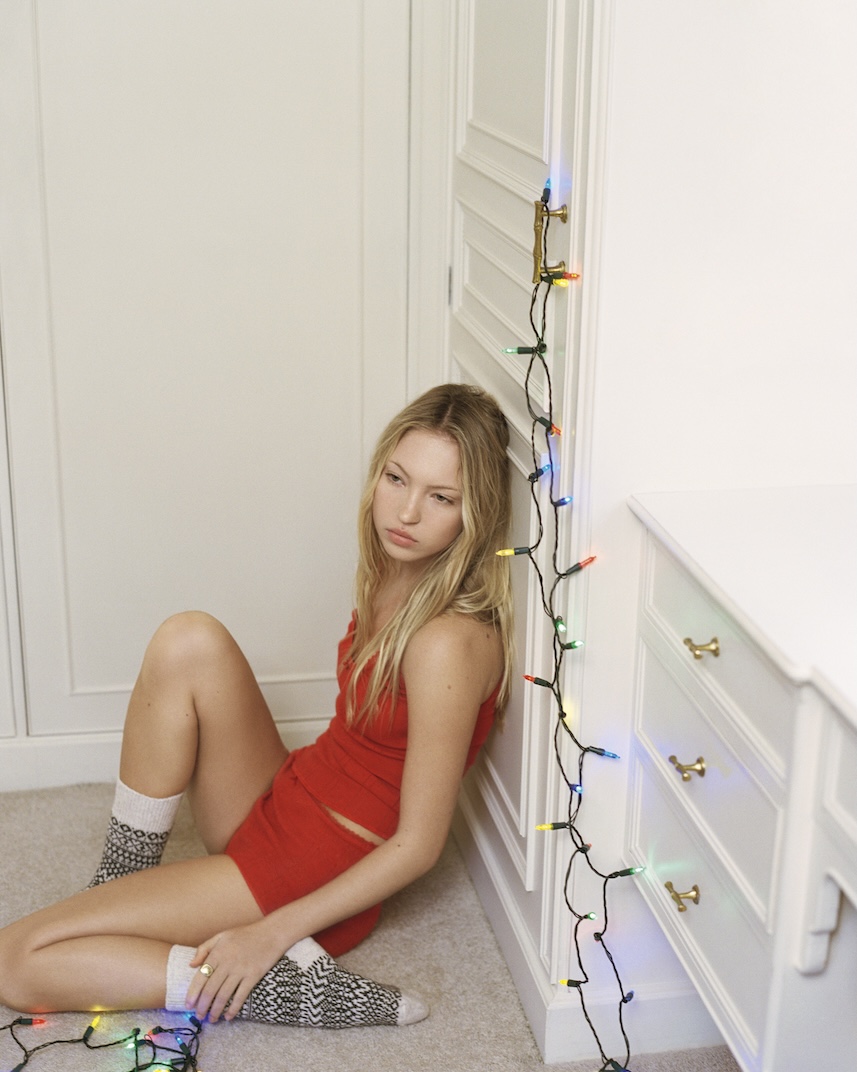

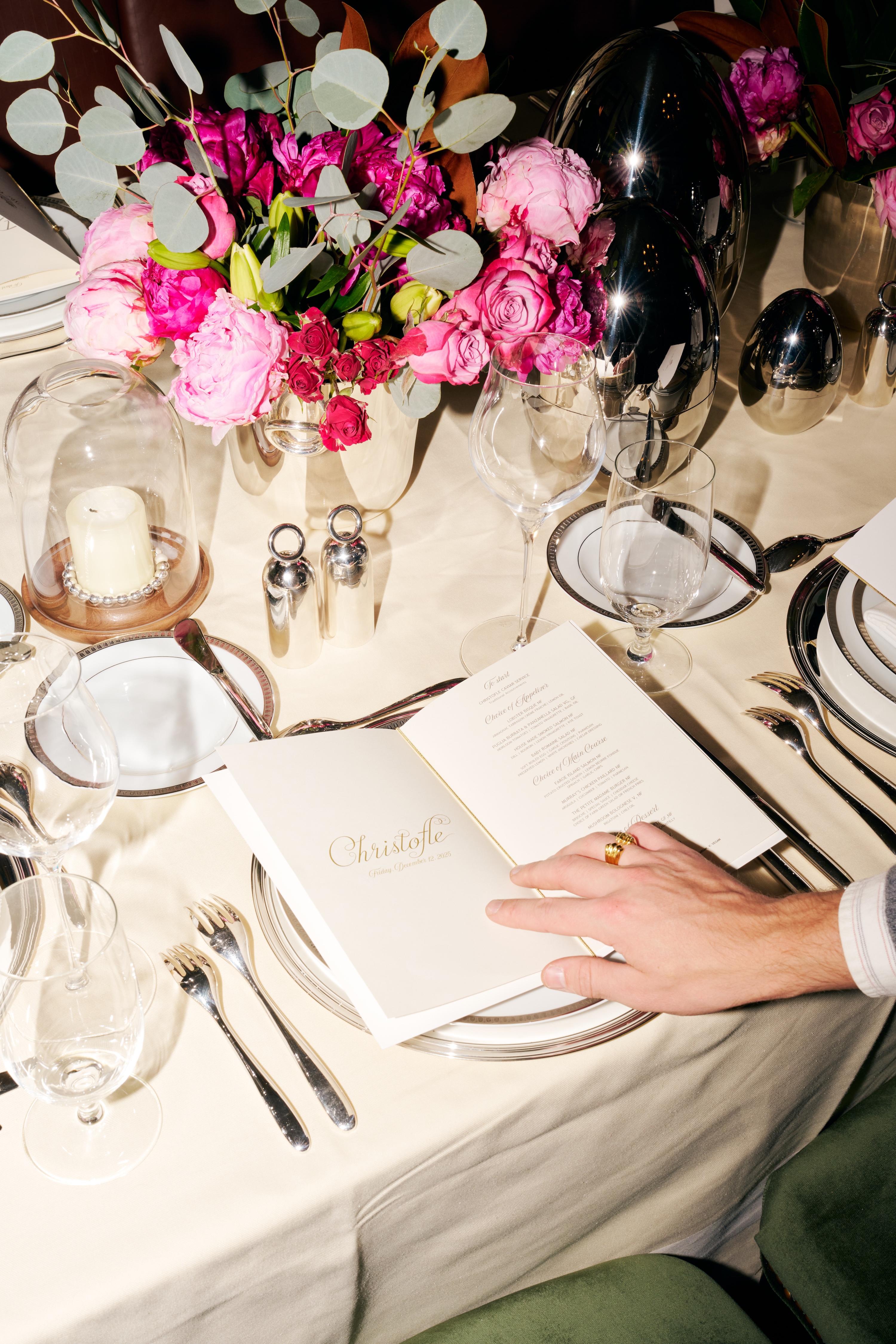

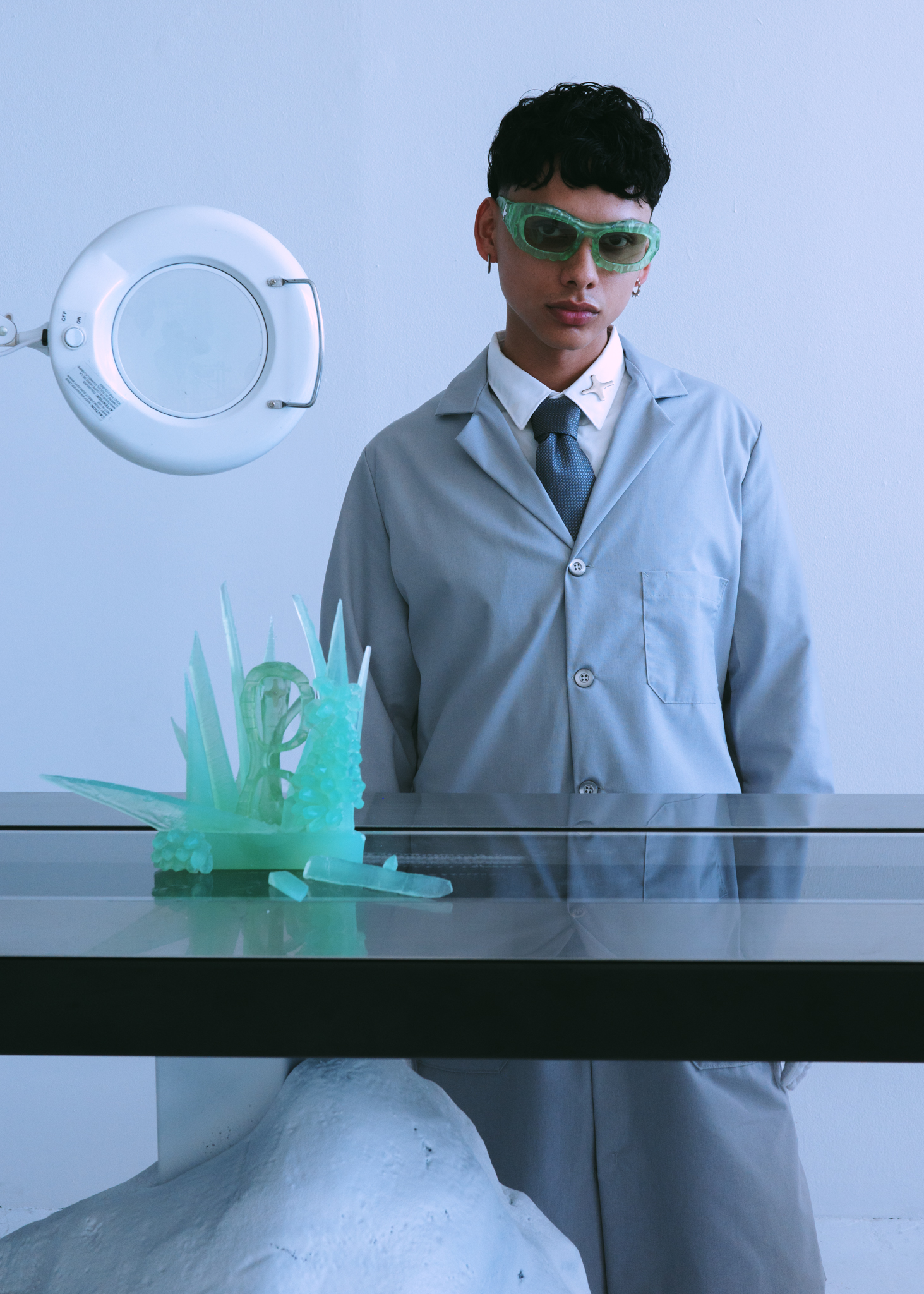
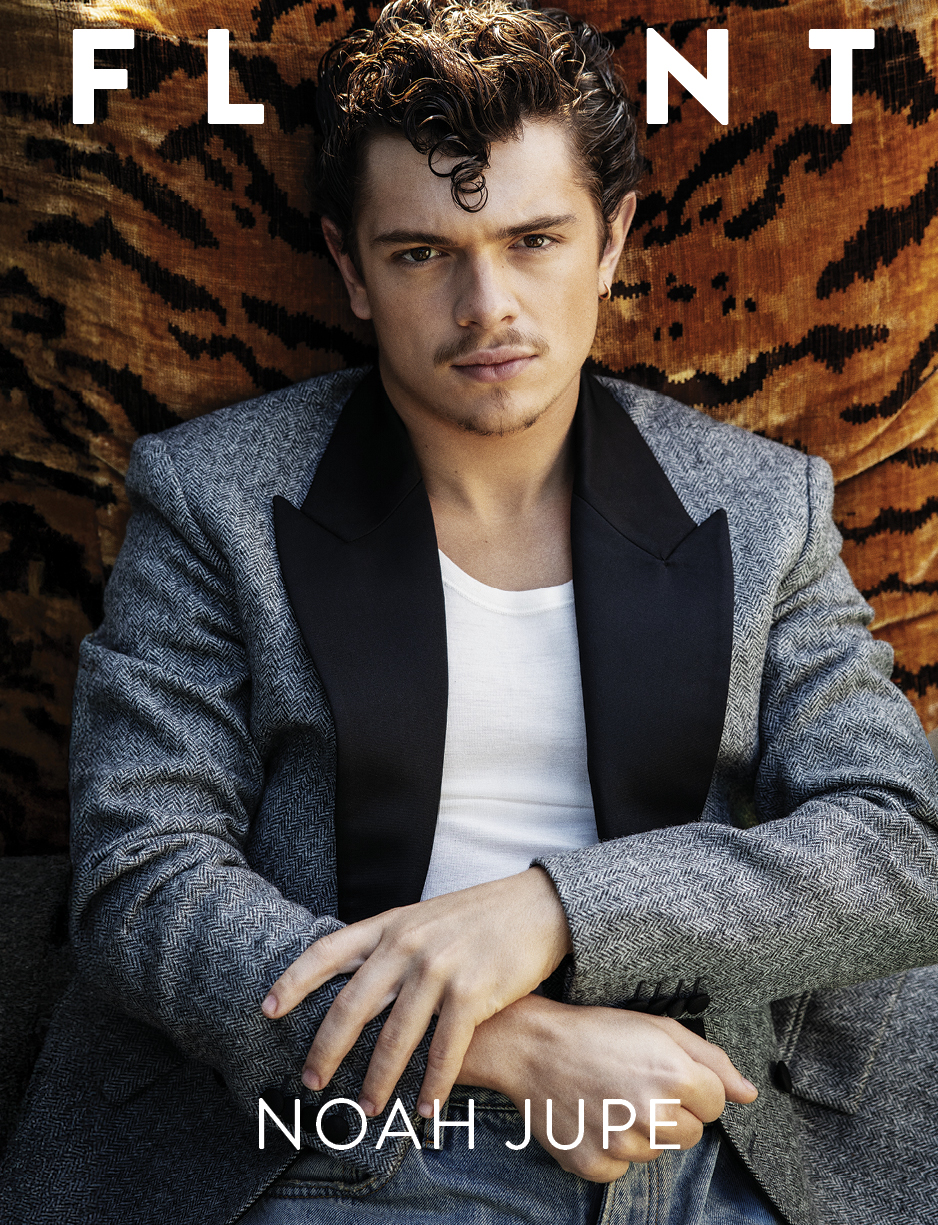


.JPG)
.jpg)

